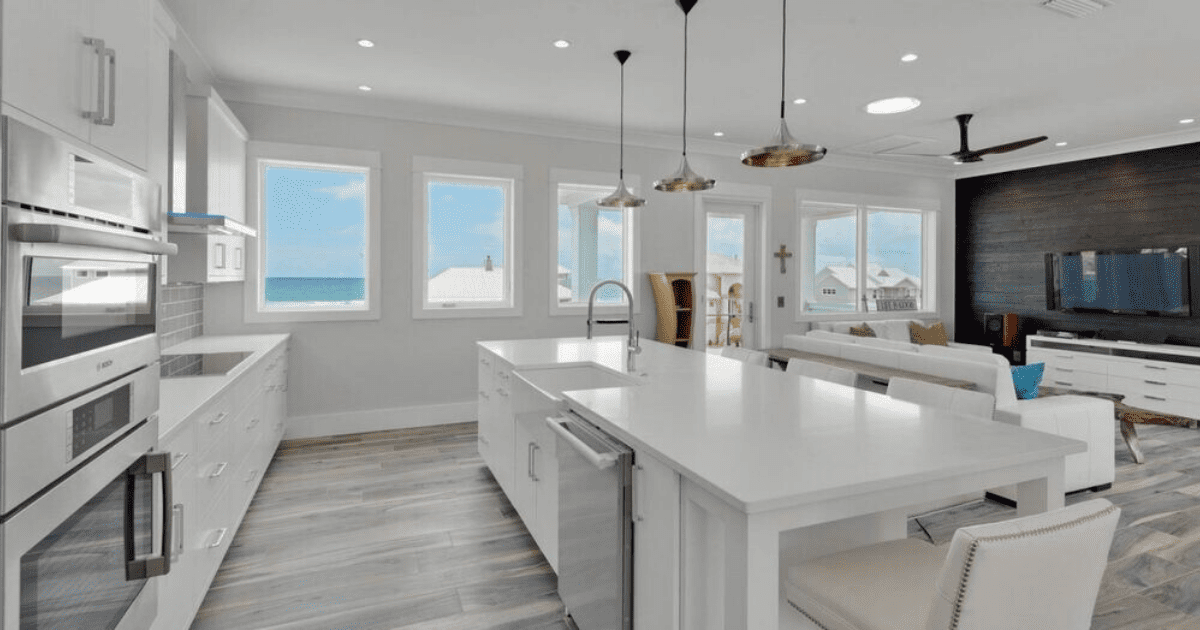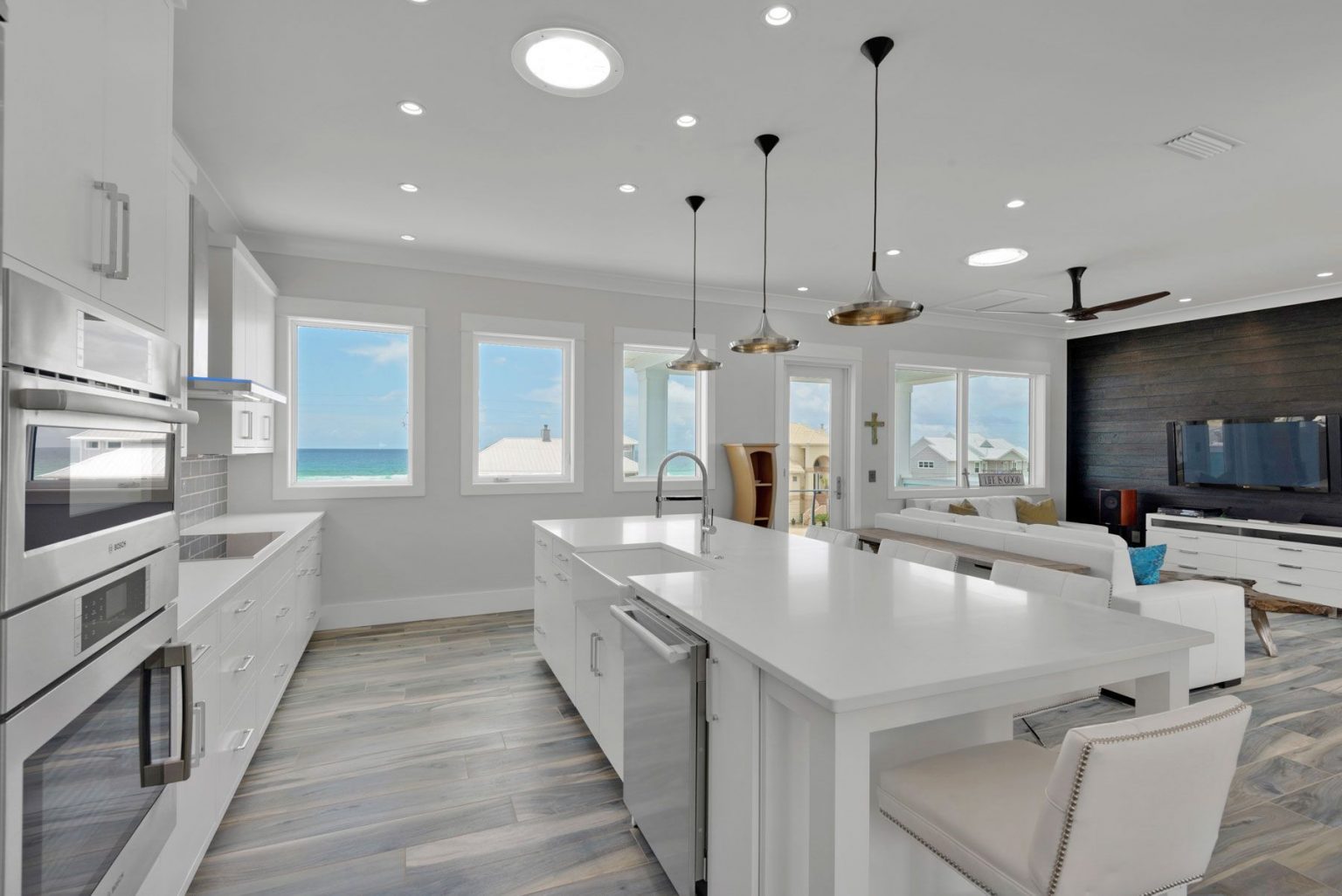Skylights are a great addition to a home; they can reduce utility costs by providing natural light as illumination as well as a using solar heat to provide heating without needing to pay for gas or electrical heating. On top of the reduction in utility bills skylights can provide a better sense of privacy than windows, as windows are installed within walls on the sides of houses which can allow people visibility of the home’s interior meaning the use of curtains or blinds to prevent people from seeing into the house but doing so reduces how much natural light gets through the window.
Skylights, on average, will last anywhere from 8-15 years. Regular check-ups will provide your skylight an extended lifespan.
How long will my skylight last before it needs to be replaced?
A common concern that is brought up during our consultations is the question of how long skylights last before needing maintenance or replacement? As the installation of skylights can vary in price, it is understandable customers may have this worry before installing skylights for themselves. Fortunately, a skylight will typically last for 8-15 years before needing replacement and with proper maintenance they can last even longer. We already know the next question which is “How much maintenance do skylights need?”. Skylights are not a product that are installed with a ‘set and forget’ mentality, they require regular maintenance and work to keep them looking good and prevent damage to get the most out of them.
Maintenance includes the cleaning of both the interior and exterior of the skylight, checking for any cracks or blemishes and checking if the skylight is fully sealed as to not let any water leak through the sides of the skylight. Hiring a professional skylight installer to perform repairs and checking for any potential issues can save you hundreds or thousands of dollars in the long term. Outside of cleaning and repairs the most important thing to improve the life span of the skylight is constantly monitoring the skylight so that should an appear it can be fixed as early as possible.
How do I know when it is time to replace my skylight?
No matter how vigilant you are with maintaining your skylight, it will eventually need replacing due to general wear and tear and with age. When is it time to replace a skylight? The obvious signs of leaks or cracks will need replacing but there are other less obvious signs that indicate its time to replace the skylight. These signs include yellowing or discolouring of the skylight which will inhibit the skylights’ ability to illuminate the space. This reduces the effectiveness of a skylight, where less light is let into the home. A potentially more significant issue which indicates the skylight needs to replaced is condensation. If condensation can be found on or around the skylight, this can indicate an issue with the sealant and if left unattended can result in the roof needing a full or partial replacement.
Skylights will last you a long time
Skylights have an average lifespan of last 8-15 years before a replacement is needed. To lengthen a skylights quality of life, regular maintenance and check-ups are required. At Simply Genuine Skylights, we take pride in knowing our skylight solutions are built to last and provide open, illuminated spaces. If you would like your skylight checked or a skylight installed, call us on
(02) 4960 2399
or contact us through our website.
………………………..
Title: How long do Skylights Last?
Sourced From: www.simplygenuine.com.au/how-long-do-skylights-last
Published Date: Wed, 25 Aug 2021 22:35:26 GMT
Frequently Asked Questions
What are the drawbacks of tubular skylights
There are several disadvantages to tubular skylights. They require professional installation to ensure they are properly sealed and secured. This process can be time-consuming and costly, which could result in higher installation costs than the initial fixture purchase price. Due to their limited size, tubular skylights may not fit into larger roof openings. These styles also tend to block out an area of the ceiling instead of a traditional skylight, which allows natural light to enter at all angles.
Another problem is that tubular Skylights can only function well in direct sunlight. This can limit their use in certain climates. A selection of additional fans and air ventilation systems must be made carefully. They will bring more heat into the home and should have adequate ventilation to keep it cool during summer. The tubular skylights don’t provide the same panoramic view as fixed glass models.
What’s the difference between a sun tunnel and a solar tube?
Both solar tubes and sun tunnels can be used to bring natural sunlight into dark areas of a home. Despite their similar appearances and serving the same purpose, they have distinct differences.
A solar tube consists of two main components: an outer dome, which sits on the roof, as well as an inner tube that runs through your attic to provide the lighting effect. The inner tube contains a highly reflective surface to amplify the sunlight’s reflection and is often insulated, which helps contain energy throughout the day and night. The outer dome connects directly into shingles. This allows for simple installation without the need to frame or tear up walls.
A sun tunnel also called a tubular skylight, takes a slightly different approach. The tube is simply one long tube with an acrylic dome attached on one end. The other ends lead into your desired room. You will have an efficient and evenly distributed interior lighting solution that is easy to install. This is ideal for homeowners who want to enjoy bright daylight every day from sunrise to sunset. Sun tunnels are more popular than traditional skylights due to their visual appeal, simplicity and cost-effectiveness.
The primary difference between a solar tube and a sun tunnel is that solar tubes provide more significant insulation by having a reflective interior surface, whereas sun tunnels do not require additional insulation but still offer excellent natural light indoors in comparison with regular skylights. Sun tunnels are also less expensive and require less effort to install than traditional skylights. This makes them a good choice for homeowners who want minimal hassle when it comes time to make home improvements.
What are some of the drawbacks of solartube lighting?
Solar tube lighting can bring natural sunlight into dark indoor spaces. It is both cost-effective and sustainable. You should consider its drawbacks before you install it.
First, the cost. Solar tubes can be expensive since they require special installation, solar collectors, and piping to distribute the light properly. Traditional fixtures, however, are comparable in price.
Solar tube lighting is best when it is in direct sunlight. It may not work as well in overcast or cloudy weather. This can cause fluctuations of the light delivered to the room throughout the day. It also limits the effectiveness of the solar tube lighting as a long-term solution to artificial lighting requirements.
Third, there are also issues with glare/reflections from glass tubing. This reduces both the overall viewing angles and design elements of the room. This can also create heat issues due to its ability to absorb outside temperatures leading to overly hot indoor areas during certain times of day or seasonally.
Finally, solar tube lighting requires regular maintenance in order to keep the tubing clean from dust buildup which diminishes its overall efficiency at directing light into interior spaces. It is important to inspect vents and other parts from time-to-time and clean the tubes’ reflection surfaces.
What is the best size of a skylight?
The size of the space you are trying to lighten is a key factor in determining the ideal size skylight. If you have narrow spaces such as hallways or stairs, then a longer and smaller skylight might be more suitable. Standard size for a skylight is 4’x4′. However, there are sizes that can be up to 6’x10′. A large space that requires lots of natural light may be lit with multiple small windows. However, a large, evenly-sized skylight might be a better option. When choosing the size of your skylight, it is important to consider where the sun should shine at different times of the day. Skylights should be located at least 6ft away from windows to prevent glare. A skylight on a roof section that will be added is best if it has a lower slope. This is because steeper roofs receive more sunlight than those with a lower slope.
Statistics
- The Solar Night Light Kit makes the product and installation eligible for a 30% federal tax credit. (whyskylights.com)
- The Solar Night Light Kit makes the product and installation eligible for a 30% federal tax credit. (whyskylights.com)
- 4.2 out of 5 stars 5% coupon applied at checkout save 5% with coupon (amazon.com)
- See more product details Special offers and product promotions to save up to 10% withCreate your FREE Amazon Business accountBusiness-only prices and free shipping. (amazon.com)
- The federal solar tax credit allows you to deduct 26% of the cost of installing a solar energy system. (billraganroofing.com)
External Links
elitehomedaylighting.com
tubular-skylight.com
solatube.com
skylightspecialist.com
whyskylights.com
How To
Up, Up and Away: How To Measure and Install Your Dream Skylight
A skylight is a window in a roof or ceiling that lets natural light through. Skylights can be used for aesthetic reasons, or for energy efficiency.
Skylights come in various shapes and sizes, depending on the space available and the desired effect. Skylights with fixed frames provide direct sunlight. However, adjustable louvered skylights can be opened and closed just like blinds. Tubular skylights work well in places where light is required at high levels, but are limited in space.
Before installing a new skylight in your home, you will need to measure the exact area. Measure within the frame of the current structure. Consider any obstructions that could block the sun’s rays. The distance to which your new skylight is located from electrical and other utilities should also be considered.
Measurements should include measurements for the corner wall frames. This will allow you to purchase the correct model that fits your needs.
You must also make sure that there is sufficient curb space for your head to be clear of a tubular skylight or louvered skylight. These models are usually twelve inches high at the top of the dome.
Although it may seem daunting to install a Skylight, it is possible to do so with proper planning and preparation. Measure your area carefully and take into account the angle and slope of your roof. Sloped roofs make it harder to install large units that require multiple layers.
Install safety equipment, such as hard hats or goggles, while working on roof structures that surround fragile glass panels and acrylic domes. Before installing new frames, remove any flashing material using hammers and electric saws. All water leakages should be sealed with weatherproofing tape or high-quality caulk.
Finalize by securing your skylight frames in the roof structure. Then, either place the acrylic domes, or the glass, in the frame, and attach the louvers to the frame according to the instructions.
You can measure and install your items easily with a bit of planning and research.
Always check our latest articles at…
https://newskylight.com//category/new-installations

